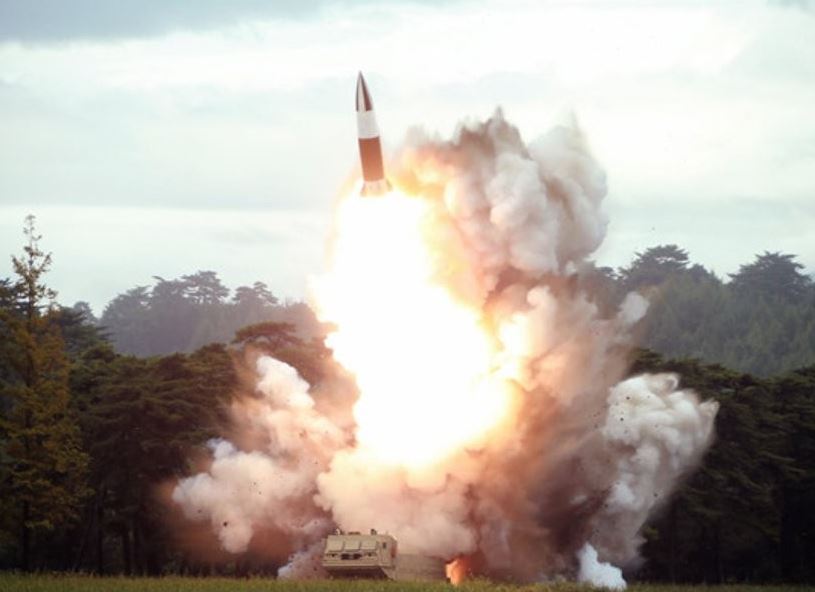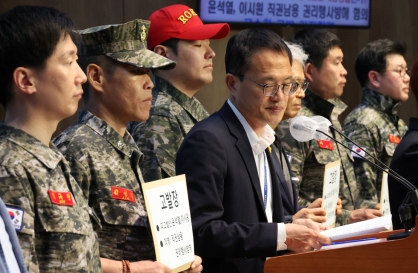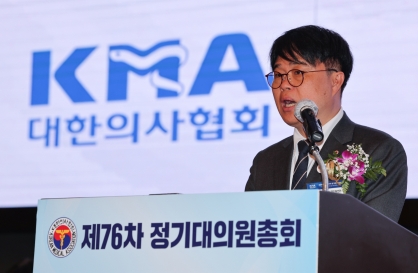N. Korea fires 3 short-range projectiles toward East Sea: JCS
By YonhapPublished : March 9, 2020 - 08:44

North Korea fired three short-range projectiles into the East Sea on Monday in what was believed to be part of a joint strike exercise, South Korea's Joint Chiefs of Staff said.
The projectiles were fired northeastward from areas near its eastern town of Sondok in South Hamgyong Province at around 7:36 a.m, the JCS said, adding that they flew around 200 kilometers, reaching a maximum altitude of around 50 km.
The launches came a week after the North conducted similar firings on March 2.
"The launches appear to be part of its artillery strike drill involving multiple types of multiple rocket launchers for a wintertime exercise, following the previous ones staged on Feb. 28 and March 2," the JCS said in a release.
The South Korean and the US intelligence authorities have been analyzing other specifics, it said, adding that the military is "monitoring the situation in case there are additional launches and maintaining a readiness posture."
On March 2, the North fired two short-range projectiles from its super-large multiple rocket launcher under the guidance of Kim Jong-un during its strike drill. It also conducted such an outdoor drill three days earlier.
So far, North Korea has tested the system five times, including the test last Monday. Sondok is where the North conducted the first known test of the system in August 2019.
The presidential office held an emergency meeting of security-related ministers via a video conference, presided over by Chung Eui-yong, director of national security at the presidential office, and analyzed the North's intention and the overall security circumstances, according to Cheong Wa Dae.
The latest firings came just five days after North Korean leader Kim Jong-un sent a personal letter to President Moon Jae-in and wished him and other South Koreans good health amid the massive outbreak of the novel coronavirus.
Such a conciliatory gesture came as a surprise as Kim's younger sister, Kim Yo-jong, had issued a statement just the previous day blasting Moon's office as "gangster-like" and "foolish" for complaining about Pyongyang's recent projectile launches.
Monday's projectile fire could be another test of the system, possibly to reduce the interval between launches ahead of operational deployment, according to experts and military sources.
In the previous tests, the North launched two projectiles each.
As the system has four tubes, however, experts speculate the North could conduct additional tests for successive launches of more projectiles.
Some think the North may have launched three projectiles in the August test. At the time, the JCS said further analysis was required to verify that. Military sources said one of the missiles could have misfired before it could be detected.
South Korean military officials consider rocket launcher projectiles little different from short-range ballistic missiles, as both weapons are equipped with a guided system and they lack significant differences.
North Korea is seemingly reluctant to call the weapon a ballistic missile as UN Security Council resolutions ban the communist country from all ballistic missile activity.
In response to last week's test, five European nations -- Belgium, Britain, Estonia, France and Germany, all UN Security Council member countries -- issued a statement on Thursday slamming Pyongyang for a provocation that violated the resolutions.
The North bristled at this, stressing once again that the launches were meant to boost its self-defense capabilities.
Throughout 2019, the North test-launched missiles 13 times amid the stalled denuclearization talks with the United States.
In its New Year's Day message, Pyongyang warned it will show off a "new strategic weapon" in the near future in protest over the stalled talks. Experts said the "strategic weapon" may mean an advanced type of its intercontinental ballistic missile or a submarine-launched ballistic missile.
Instead of completely turning away from dialogue, the North appears to have taken low-intensity steps, apparently intended to beef up leader Kim's internal grip on power, according to experts. (Yonhap)






![[Weekender] How DDP emerged as an icon of Seoul](http://res.heraldm.com/phpwas/restmb_idxmake.php?idx=644&simg=/content/image/2024/04/25/20240425050915_0.jpg&u=)


![[Music in drama] An ode to childhood trauma](http://res.heraldm.com/phpwas/restmb_idxmake.php?idx=644&simg=/content/image/2024/04/25/20240425050929_0.jpg&u=)









![[Herald Interview] Mistakes turn into blessings in street performance, director says](http://res.heraldm.com/phpwas/restmb_idxmake.php?idx=652&simg=/content/image/2024/04/28/20240428050150_0.jpg&u=20240428174656)
